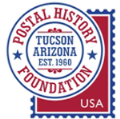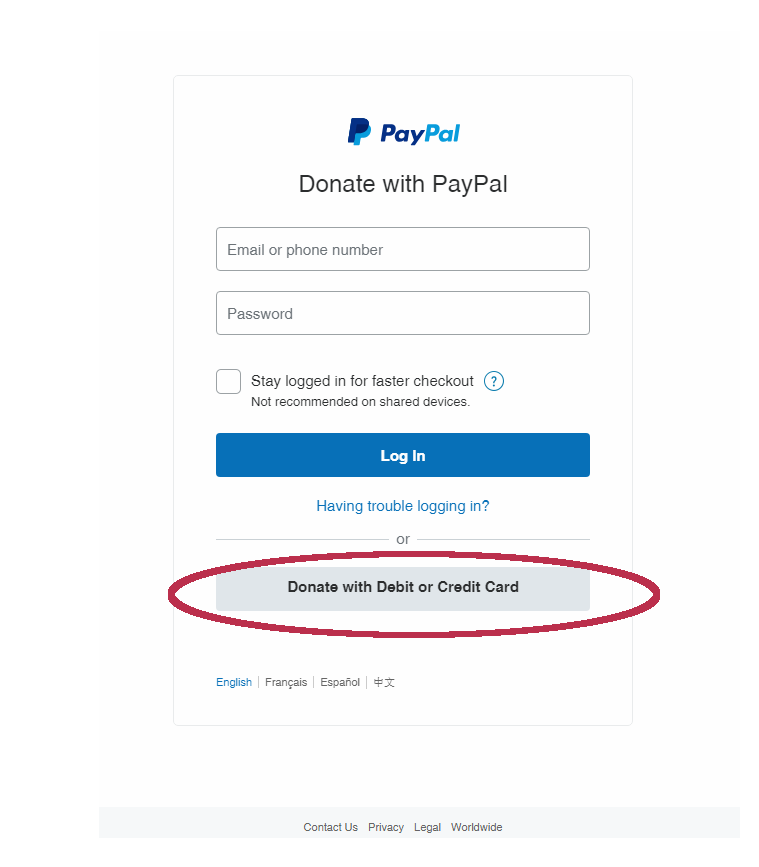This online exhibit was created by former librarian/archivist Lisa Hodgkins and was supported with funds granted by the Arizona State Library, Archives and Public Records Agency, a division of the Arizona Secretary of State, under the Library Services and Technology Act, which is administered by the Institute of Museum and Library Services.
-

Arizona’s Postal History
Arizona’s Postal History is a story of how intrepid settlers and early visitors to the State established communication links and changed a harsh wilderness into a region of ranches, mines, towns, and cities. Mail delivery in Arizona was initially done on a somewhat informal basis. Military couriers, freight carriers, and even travelers, helped carry the mail from isolated ranches, forts and other settlements to the nearest post office or forwarding point. Once a stagecoach service was established, the stage stops served as strategic postal locations. Eventually train lines were built to carry mail into and through the area. Along the way, hazards such as outlaws, bandits, rough terrain and extreme heat, made mail delivery a challenging and dangerous enterprise. The people who delivered mail and served in Arizona’s post offices were (and still are), individuals whose dedication and bravery have been essential to the development of the State.
(Photo: Sedona Post Office, ca. 1945-1948) -

Early Arizona and the Mail Route to California: Father Kino, the Presidio, and Juan Bautista de Anza
In the late 1600s, Father Eusebio Kino and other European missionaries travelled to Arizona and began to create an infrastructure which encouraged outside travel into and through the region. In the mid 1700s, the Tubac Presidio, followed by the Presidio of San Agustin del Tucsόn were established to protect Spanish interests. This meant that travelers and military personnel were passing through Arizona, and with them came communication in the form of letters and other documents. During this time Juan Bautista de Anza led an expedition from Arizona to explore a route to California, and in 1823 Captain José Romero set out from Tucson with a similar goal.
(1975 "TUPEX" [Tucson Philatelic Exhibition] cover commemorating Tucson's bicentennial) -

Early Arizona and the Mail Route to California: The Gadsden Purchase
When the United States acquired Southern Arizona with the Gadsden Purchase in December in 1853-1854, travel in this area greatly increased. U.S. military posts were established throughout Arizona and an overland route to California developed. When mail delivery from the U.S. east to west coasts began, it was primarily transported by steamer ships from Eastern Seaboard ports to Panama where an overland crossing was made. Steamers then picked up the mail for transport up the West coast. In 1857 James E. Birch was awarded the first contract to carry mail semi-monthly overland through Arizona. The first trip of his San Antonio-San Diego Line (also commonly known as “Jackass Mail” due to the fact that passengers crossed a portion of the journey on mule-back) took 56 days and the mail was carried on pack animals. The second trip went by stagecoach and took 38 days. Stage stops were built along the route and Maricopa Wells became one of the most important stations between El Paso and San Diego because it was the dividing point, where the eastbound and westbound mails met and turned back. When the Butterfield Stage Company was awarded a contract to deliver mail along the same route, the San Antonio and San Diego Mail Line’s service was cut and the line was completely discontinued in 1861.
(1953 U.S. stamps commemorating the Gadsden Purchase, Scott #1028) -

Arizona's First Post Office
Although the population in the U.S. Southwest was low following the Gadsden Purchase, the need for communication with military units stationed in Arizona led to the first official mail service in the territory. In 1852 Col. Edwin V. Sumner, began construction at a site in New Mexico Territory (now Arizona) to establish a post from which to operate against the Navajo. The buildings were chiefly made of pine logs with dirt roofs, though there were some made of adobe. This base was named Fort Defiance, and a post office was established there in 1856. In April 1861, troops were withdrawn from Fort Defiance to participate in the U.S. Civil War and the site was abandoned. However, in 1868 the site was selected as an Indian Agency for the Navajo, and a post office was re-established.
(1915 postcard showing the area around Fort Defiance, Arizona) -

Stagecoaches through the West: First contract in the West
The Butterfield Overland Mail Company entered into a contract with the United States government in September 1858 to operate a stage line to carry mail and passengers from Missouri to San Francisco. The trip took approximately 22 days, and the route came through Arizona, with Tucson being one of the major stops. The Buckley House served as Tucson’s Butterfield station and provided meals, livestock accommodation, and was also a hotel. -

Stagecoaches through the West: Butterfield's influence
The Butterfield stage increased this city’s reputation as a transportation hub and by 1860 the company boasted 14 dwellings and employed 53 residents in Tucson. Tucson’s post office (across the street from the stage station) was the Territory’s second one to be established, and for a few years was the main post office in Arizona. Other post offices soon sprang up along the Arizona stage route. The Butterfield stage only lasted 2 ½ years. With the commencement of the Civil War, the U.S. government pulled troops out of Arizona which made the stages more vulnerable to attack and the service ceased. -

Stagecoaches through the West: Post-Civil War
After the Civil War, Arizona tried to re-introduce a mail service. In 1864 Governor John Goodwin explained: “Since the discontinuance of the Overland Mail in 1861, and until the action of the present Congress, no mail routes have been established in any part of this Territory. We have been indebted to the courtesy of the military authorities for the means of communication between the principal points in the Territory, and the mail routes in New Mexico and California…. It is recommended that you memorialize the Post Master General for the immediate establishment of this mail service.” -

Stagecoaches through the West: Travelling conditions
Notes from a Stagecoach Traveler: A.M. Franklin of Tucson gives and account of travelling by stagecoach in 1876….”I managed to sleep pretty well after I got rid of my headache by wrapping my head up in the blanket so that it would not get bruised as I bounced and knocked around. The stage rocked both ways. At a station somewhere below sea level we encountered a terrible sandstorm. The wind blew and the sand was choking. I had to wrap my head in the blanket. How those four horses reached the next station only two hours late is more than I have ever been able to figure out. Both they and the driver seemed to be comparatively indifferent to the storm….The grub on the route was poor, rusty bacon, sour beans, alkali water. There was a German with us who had had the forethought to provide himself with several loaves of rye bread and a bundle of limburger cheese and he saved our lives even if we did make him tie his cheese on the axle back of the stage…” -

Stagecoaches through the West: Wells Fargo
Wells Fargo did not operate stage coaches under its own name in Arizona, but had a profitable business offering forwarding and freight services. Local Wells Fargo agencies sold postage paid envelopes and became a trusted means of sending letters and money. As the postal service became more prevalent in Arizona, Wells Fargo was still used for sending mail but increasingly, their pre-paid envelopes were dropped off at post offices to be sent along with the regular mail. -

Star Routes: Early mail contractors
Shortly after the end of the Civil War, a number of new mail routes and post offices were established in Arizona. The mail was primarily delivered by contractors operating “Star Routes” (a route served by a private individual or firm holding a contract with the Post Office Department to transport mail between communities). Many of the early mail contractors are recognizable pioneer family names such as Zeckendorff, Poston, Hayden, Aguirre, Jeffords, Tully, Hubbell, and Udall. These postal pioneers were responsible for mail delivery to the most remote and dangerous parts of Arizona and at times, roads were acutally improved at the expense of the mail contractors. The opportunity to profit from lucrative U.S. government mail contracts was a huge incentive. However, this also led to a series of Star Route frauds whereby postal officials took bribes in exchange for awarding contracts – in some cases contractors took the money, but never actually delivered the mail. -

Star Routes: Transportation
Small remote settlements and mining camps could only be served by these Star Route carriers on horse or mule back or using buckboard wagons. This type of service existed until well into the 20th century.
1908 postcard featuring a Native American contract mail carrier -

Star Routes: Leonard Redfield
Leonard Redfield who served as postmaster in Benson from 1896 to 1940 told how he began delivering mail in the Redington area on horseback at the age of 12. -

Star Routes: Down the Grand Canyon by Mule
Mule train is still the method of delivery to the village of Havasupai at the base of the Grand Canyon.
Charlie Chamberlain and his mule train deliver the mail.


















































